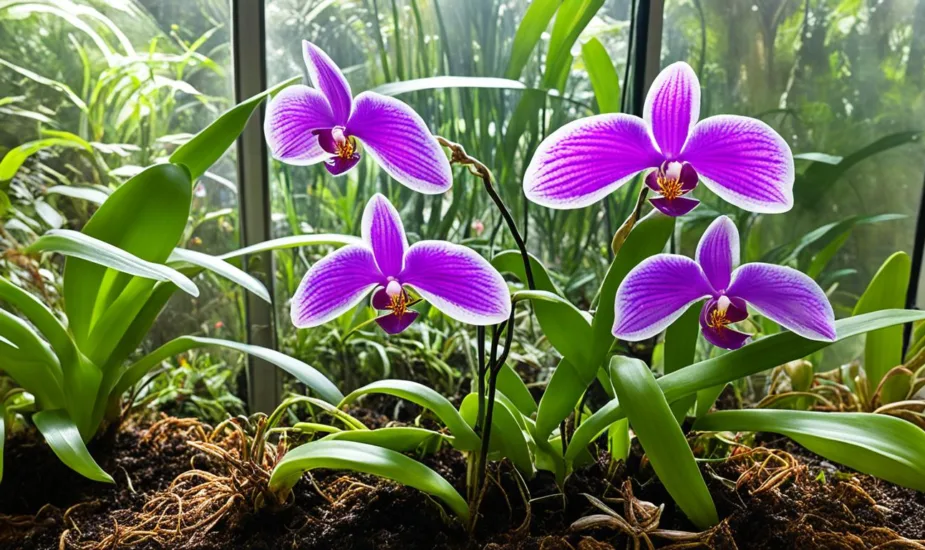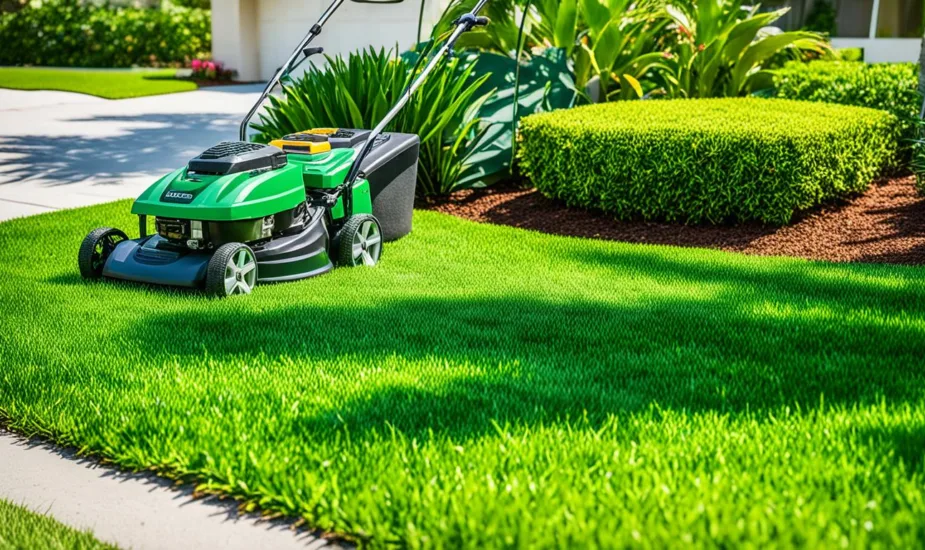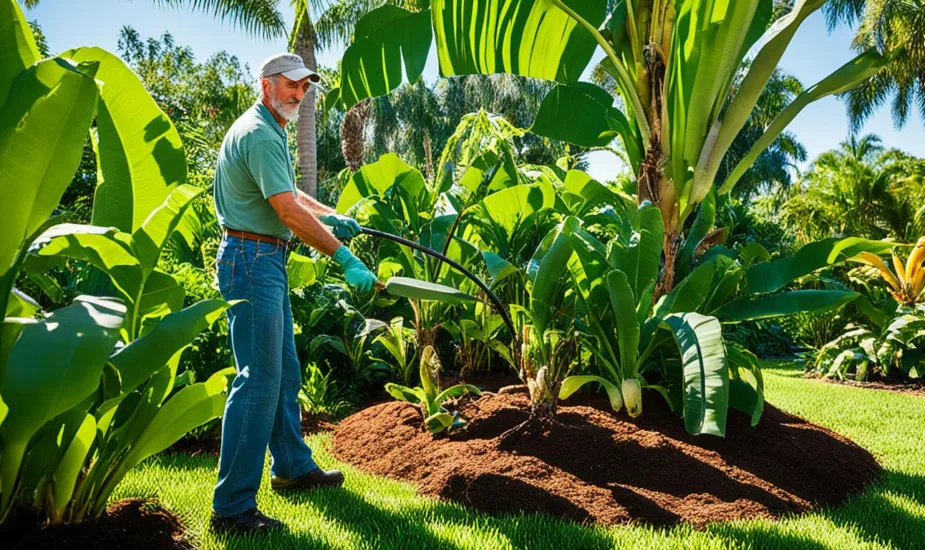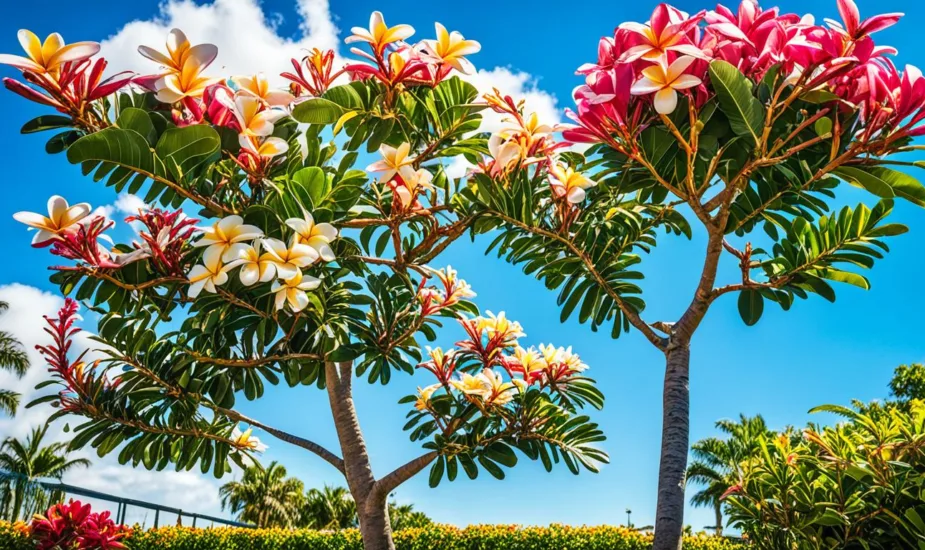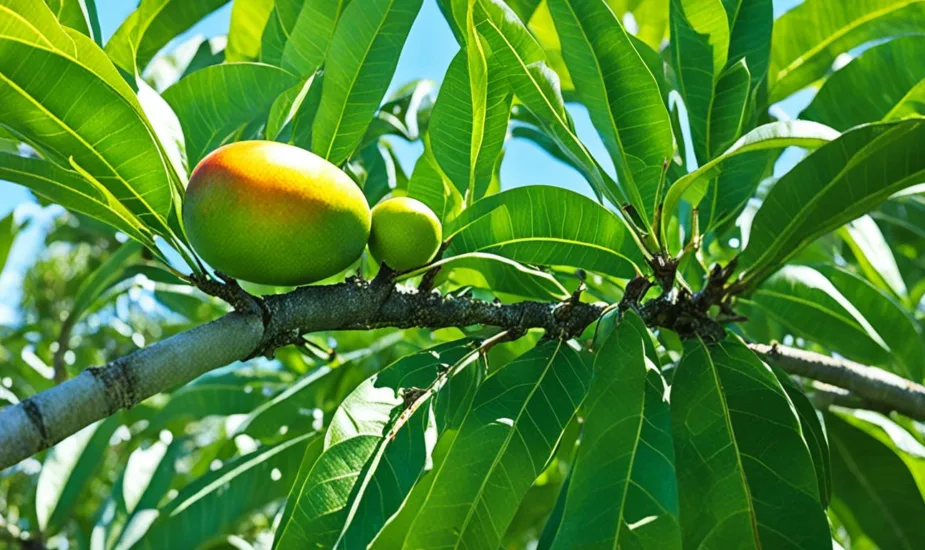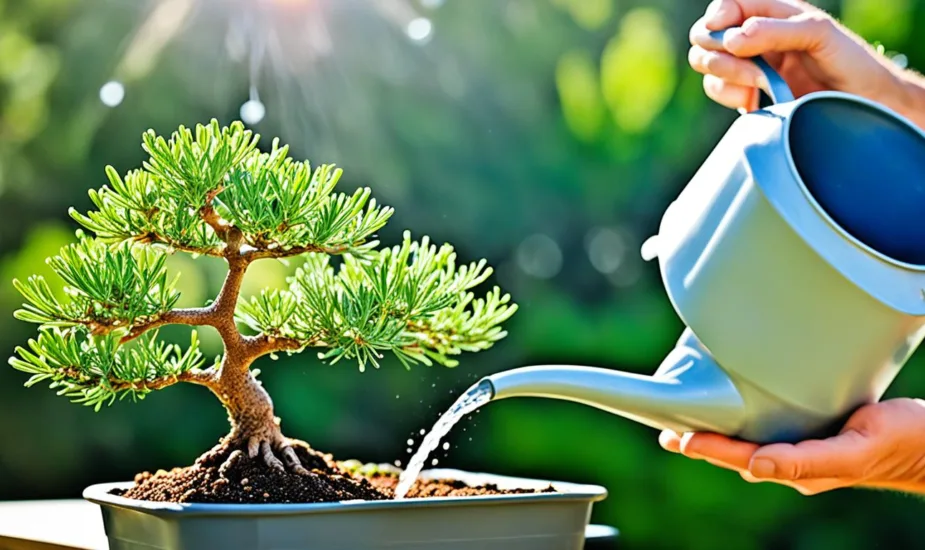Unlock the Secret: How to Water Plants in Florida Efficiently
Hey there, fellow plant lover! If you've ever wondered how to keep your Florida plants thriving, you're in for a treat. I've cracked the code to efficient plant watering in the Sunshine State. Join me on this green journey as we unlock the secrets to lush, happy foliage. Your garden will thank you!

Living in Florida, we are no strangers to the hot and humid climate that can be a challenge when it comes to keeping our plants healthy. With the combination of high temperatures and frequent storms, it can be difficult to know the best way to water your plants while conserving water at the same time. Don’t worry, I’m here to help!
Key Takeaways:
- Proper watering is key to keeping Florida plants healthy
- Efficient watering practices can help conserve water
- Different types of plants have different watering needs
Understanding Florida’s Unique Climate
When it comes to watering plants in Florida, it’s important to note that the state’s climate is unique compared to other parts of the country. Florida’s hot and humid weather, combined with its regular afternoon thunderstorms, can create challenges for home gardeners looking to keep their plants hydrated and healthy.
Here are some best practices for watering plants in Florida:
- Water in the morning or evening: During the hot and dry months, it’s best to water your plants in the morning or evening when the temperatures are cooler. This will help to reduce water loss through evaporation and will also ensure that the plants have enough moisture to carry them through the day.
- Avoid overwatering: While it may be tempting to water your plants frequently in Florida’s hot climate, it’s important to avoid overwatering. Overwatering can lead to root rot, which can be deadly for plants. Instead, water your plants deeply once or twice a week, depending on their individual needs.
Additionally, it’s important to consider the type of soil your plants are growing in. Florida’s sandy soil doesn’t hold moisture as well as other types of soil, which means that plants may require more frequent watering.
How to Determine if Your Plants Require More Water
To determine if your plants require more water, pay attention to their leaves. If the leaves are turning brown or yellow and are becoming brittle, this may be a sign that the plant needs more water. You can also test the soil by sticking your finger a few inches into the soil. If the soil feels dry, it’s time to water your plant.
By understanding Florida’s unique climate and following best practices for watering plants, you can help your plants thrive in the Sunshine State.
Determining the Watering Schedule
One of the most important factors to consider when watering plants in Florida is the watering schedule. Different plants have different water requirements, and it’s essential to ensure that they receive the right amount of water at the right time.
The frequency and amount of watering will depend on several factors such as the type of soil, the time of year, and the type of plants being grown. Generally, plants should be watered deeply and infrequently to encourage deep root growth.
A good rule of thumb for most plants in Florida is to water them deeply once or twice a week. However, this can vary depending on the weather and other factors. During periods of heavy rainfall, plants may not need to be watered as much. On the other hand, during hot and dry periods, they may require more frequent watering.
It’s essential to monitor plants regularly to determine when they need watering. One way to check is to stick your finger into the soil to a depth of about an inch. If the soil is dry at that depth, it’s time to water the plants. Another way is to observe the plants themselves. If they appear wilted or have yellow leaves, they may be experiencing drought stress and need more water.
In general, it’s better to underwater than overwater plants. Overwatering can lead to root rot and other problems. However, underwatering can also be harmful to plants, so it’s important to find the right balance. The key is to pay attention to the plant’s needs and adjust the watering schedule accordingly.
Watering Techniques for Florida Plants
Watering plants in Florida can be a challenge due to the hot and humid climate. To ensure your plants thrive, it is important to use the right watering techniques. Here are some tips for watering plants in hot climates:
- Water in the morning or evening: It’s best to avoid watering during the hottest part of the day, as the water will evaporate too quickly. Watering in the morning or evening when the temperatures are cooler will allow the plants to absorb more water.
- Water deeply: It’s important to water deeply to encourage strong root growth. Shallow watering can actually harm plants, as it can cause roots to grow close to the surface, making them more susceptible to drought and other stresses.
- Use a soaker hose: Soaker hoses are a great way to water plants deeply without wasting water. They slowly release water at the base of the plant, allowing it to soak in slowly.
- Avoid getting water on the leaves: Wet leaves can lead to fungal diseases, so it’s best to water at the base of the plant and avoid getting water on the foliage.
- Use mulch: Adding a layer of mulch around your plants can help retain moisture in the soil, reducing the amount of water needed.
- Water according to the plant’s needs: Different plants have different watering needs, so it’s important to understand the specific requirements of each plant in your garden. Some plants may need to be watered more frequently than others.
By following these tips and using the right watering techniques, you can help your plants thrive in Florida’s hot and humid climate.
Adequate Drainage is Key
When it comes to conserving water for your plants in Florida, having proper drainage is crucial. Without it, water can accumulate and cause damage to your plants’ roots. This can also lead to the growth of harmful fungi and bacteria, which can further harm your plants.
To ensure adequate drainage, make sure the soil in your planters or garden beds is well-draining. This means it should be loose enough to allow water to pass through but also retain enough moisture to support healthy plant growth.
Additionally, avoid overwatering your plants, as excess water can lead to waterlogging and root rot. Give your plants time to absorb the water you’ve provided before giving them more.
| Tip: | Consider adding a layer of gravel or sand to the bottom of your planters to assist with drainage. |
|---|
By ensuring your plants have proper drainage, you’ll not only conserve water but also maintain the healthy growth of your plants.
Adjusting Watering Practices for Seasonal Changes
Florida’s climate is unique, with hot and humid summers and mild winters. As a result, plants require different amounts of water depending on the season. Understanding the seasonal changes is crucial for maintaining healthy plants and conserving water.
Summer Months
During the summer months, the heat and humidity cause plants to lose more water through transpiration. As a result, plants require more frequent watering. In Florida, it is recommended to water plants twice a week during the summer months. However, this will vary depending on the type of plant, soil type, and the amount of rainfall received. It is important to monitor the plant’s moisture level and adjust watering practices accordingly.
Winter Months
In the winter months, plants do not require as much water as the cooler temperatures and reduced sunlight slow down their growth. It is recommended to reduce watering frequency to once a week, or potentially even less if there has been significant rainfall. Be sure to check the plant’s moisture level before watering to avoid overwatering.
Remember, adjusting watering practices based on seasonal changes not only helps to conserve water but also ensures the health of your plants.
Monitoring Plant Watering Needs
One way to determine when your plants need watering is to check the soil moisture level. Stick your finger a few inches into the soil near the plant’s base, and if the soil feels dry, it’s time to water. On the other hand, if the soil feels moist, wait a day or two before checking again.
Another method to monitor your plant’s water needs is to look for signs of stress such as wilted or yellowing leaves. If you notice these symptoms, your plant may be receiving too little or too much water.
Adjusting your watering schedule to meet your plant’s needs can help conserve water and promote healthy growth. With the right watering techniques and monitoring, your Florida plants will thrive!
Watering Tips for Container Plants
Container plants, such as potted flowers and herbs, require special attention when it comes to watering in Florida. Here are some tips to help keep your container plants hydrated and healthy:
- Always use a well-draining container with a drainage hole to prevent overwatering.
- Check the soil moisture regularly by sticking your finger an inch deep into the soil. If it feels dry, it’s time to water.
- Water container plants early in the morning or late in the afternoon to avoid evaporative losses.
- Use a watering can or a gentle hose attachment to avoid disturbing the soil or damaging fragile stems.
- Water thoroughly until the excess water drains out of the container. Avoid letting the plant sit in standing water.
- During hot and dry periods, container plants may require more frequent watering. Adjust your watering schedule accordingly.
By following these tips, you can ensure that your container plants will thrive in Florida’s climate.
Choosing the Right Watering Tools
When it comes to watering plants in Florida, choosing the right tools is essential. Not all watering tools are created equal, and some are better suited for Florida’s unique climate and plant varieties than others. Here are some watering techniques for Florida plants that will help you conserve water and keep your plants healthy:
| Tool Type | Advantages | Disadvantages |
|---|---|---|
| Drip irrigation system | Delivers water directly to the plant roots, reduces water waste and evaporation, and can be set to a timer | Installation can be costly and time-consuming |
| Soaker hose | Delivers water directly to the plant roots, reduces water waste and evaporation, and can be left in place for extended periods of time | May become clogged over time, and not as precise as drip irrigation |
| Handheld hose with a jet nozzle | Allows for precision watering of specific areas, can be adjusted for different plant types | May be time-consuming and can cause water waste if not used carefully |
No matter which tool you choose, it’s important to use it properly to maximize its benefits. Watering techniques for Florida plants include:
- Watering in the morning or evening to reduce evaporation
- Avoiding watering on windy days to reduce water waste
- Using the right amount of water for the type of plant and soil conditions
- Avoiding watering the leaves, which can promote disease
By choosing the right tool and using the right watering techniques, you can conserve water and keep your Florida plants healthy and thriving.
Conclusion
Keeping plants healthy in Florida can be a challenge due to the unique climate conditions in the state. However, with the right watering techniques, it is possible to ensure that your plants thrive. Remember to monitor the watering needs of your plants regularly and adjust your watering practices as necessary, ideally by determining a watering schedule.
Proper drainage is also important to prevent water wastage and allow your plants to absorb the moisture they need efficiently. Choose watering tools that are appropriate for the plants you are caring for, and avoid overwatering your container plants to prevent root rot.
By understanding the best practices for watering plants in Florida, you can unlock the secret to efficient plant care and enjoy a flourishing garden all year round.
FAQ
Q: How do I water plants in Florida efficiently?
A: To water plants in Florida efficiently, it is important to understand the unique climate and adjust the watering schedule accordingly. Adequate drainage and monitoring the plant’s water needs are also key factors. Additionally, using the right watering tools and techniques can help conserve water and ensure the plants receive the necessary moisture.
Q: What are the best practices for watering plants in Florida?
A: The best practices for watering plants in Florida include understanding the unique climate, determining the appropriate watering schedule, using proper watering techniques, ensuring adequate drainage, and monitoring the plant’s water needs. By following these practices, you can help maintain healthy plants and conserve water.
Q: How often should I water plants in Florida?
A: The watering schedule for plants in Florida may vary depending on factors such as the plant type, soil type, and weather conditions. In general, it is recommended to water deeply and infrequently to encourage deep root growth. As a guideline, most plants in Florida will require watering about 1-2 times per week, but it is important to monitor the soil moisture and adjust the schedule accordingly.
Q: What are the watering techniques for Florida plants?
A: Some watering techniques for Florida plants include using a soaker hose or drip irrigation to ensure water goes directly to the roots, applying mulch around plants to retain moisture, and avoiding overhead watering to reduce evaporation. These techniques can help conserve water and provide plants with efficient hydration.
Q: Why is adequate drainage important for watering plants in Florida?
A: Adequate drainage is key for watering plants in Florida because it prevents waterlogging and helps maintain healthy roots. Poor drainage can lead to waterlogged soil, which can suffocate the roots and cause root rot. Ensuring proper drainage allows excess water to flow away and prevents water-related issues for the plants.
Q: How do I adjust watering practices for seasonal changes in Florida?
A: As the seasons change in Florida, the watering needs of plants may also change. It is important to monitor the weather and adjust the watering schedule accordingly. During the cooler months, plants may require less frequent watering, while hotter and drier periods may necessitate more frequent watering. Paying attention to the plants’ needs and adapting the watering practices accordingly will help ensure their health and vitality.
Q: How often should I monitor my plants’ watering needs?
A: It is important to monitor your plants’ watering needs regularly, especially in a climate like Florida’s. Factors such as weather conditions, plant type, and soil type can all affect the frequency and amount of water required. By regularly checking the soil moisture and observing the plants for any signs of wilting or stress, you can determine when it is time to water.
Q: What are some watering tips for container plants in Florida?
A: When watering container plants in Florida, it is important to ensure proper drainage by using pots with drainage holes and well-draining soil. Container plants may require more frequent watering compared to plants in the ground, as they dry out faster. It is recommended to water container plants until water drains out of the bottom of the pot, indicating thorough hydration.
Q: How do I choose the right watering tools for Florida plants?
A: When selecting watering tools for Florida plants, consider using a soaker hose or drip irrigation system to deliver water directly to the roots. These methods help conserve water by minimizing evaporation. Additionally, handheld watering cans or watering wands with a gentle spray can be useful for precise watering in smaller areas.
Q: How can I conserve water when watering plants in Florida?
A: To conserve water when watering plants in Florida, it is recommended to follow practices such as watering during early morning or late evening to reduce evaporation, using mulch to retain moisture, watering deeply and infrequently to encourage deep root growth, and avoiding overhead watering. These practices can help minimize water wastage and promote efficient water usage.
 Little Garden Tips
Little Garden Tips




